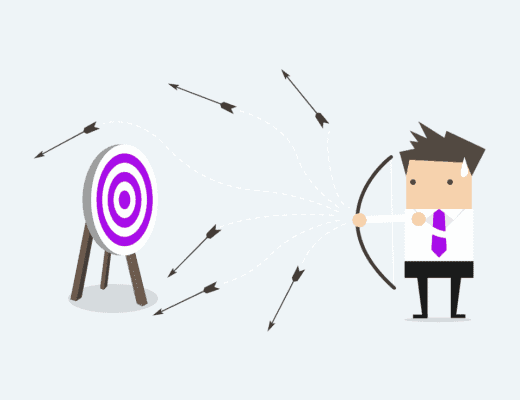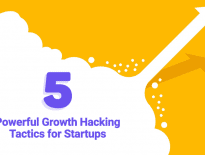Did you know that the Saas (software as a service) industry is expected to surpass $112.8B in 2019 and is rising to become one of the top industries to watch out for?
As such, the industry comes with its own set of problems and challenges. When operating a SaaS business and a regular business, there are many things you need to take into consideration.
From writing your business plan to crafting your marketing plan – there are other many methods to achieve steady business growth. SaaS brands follow a different business model.
And they require very distinct marketing strategies as well.
In this guide, we’ll be looking at the three different tactics you can employ to overcome SaaS marketing challenges.
But first, what makes SaaS marketing so different, exactly?
Well, for one, you’re not dealing with a tangible product when doing SaaS marketing.
So, right off the bet, a lot of traditional marketing concepts go out of the window. And, instead, you’re left with a number of different marketing challenges. But this also brings up an equal amount of opportunities to capitalize on.
You can’t let the product speak for itself when there is no physical product for customers to touch and interact with.
So, how exactly do you market something that is intangible, constantly changing with each update, and usually asks customers to exchange their money for a subscription instead of a one-time payment?
Well, here’s how:
1. Focus on inbound marketing and SEO
For most SaaS companies, content and inbound marketing are one of the best ways to attract new and organic users.
Inbound marketing is almost the opposite of traditional marketing. In traditional (outbound) marketing, businesses reach out to their readers with a different form of messages (TV, radio, ads, etc.).
With inbound marketing, meanwhile, businesses draw in customers to their website. Most of inbound marketing is based on content. The reason content marketing works with SaaS so well is because you’re offering your customers value, and helpful knowledge – all free of charge!
What’s the catch?
According to research, consumers typically engage with 11.4 pieces of content before making a purchase.
You may have heard the saying “content is king”. This is certainly the case with most SaaS businesses as it gives their readers a chance to become familiar with their brand before diving into their product.
The buyer’s journey begins when customers search for specific keywords or questions they need help with and your website shows up. Your blog should hold all the answers they were looking for.
You see, people don’t typically like being sold to. And through content marketing, they’re just gaining knowledge instead. All the while they’re interacting with your brand and driving traffic to your website.
This is called the “awareness stage”. Your potential clients are experiencing symptoms of a problem or need help with something. This is your opportunity to capitalize on that and give them free knowledge and a solution.
When they become familiar with your brand and website, they can move onto the next stage. And eventually, make the splurge and purchase your product.
This, in turn, turns your marketing efforts into a win-win situation. They gain knowledge and value, and you eventually gain new clients.
Aside from that, inbound marketing also helps business with:
- Building reputation and becoming an expert on the subject.
- Increasing their Google rankings (SEO).
- Better understanding their target market.
The last one, customer relations, is arguably the most important of the three.
And that brings us to our next point.
When getting started with social media, most businesses take the opportunity to talk about themselves. Don’t make the same mistake, because you’ll just drive your customers away instead.
In SaaS marketing, information is your most important asset.
And that’s where social media marketing comes in.
Here are just a few benefits it offers:
- Improving conversions.
- Building a brand and retaining customers.
- Understanding your target market better.
The last one is arguably the most important of the three. And it also helps you improve your inbound marketing as well.
Reaching anyone you want? Instant feedback? Free buyer persona information? What’s not to like.
Like with inbound and content marketing, you might want to offer value (whether it be through content, information, or discount codes) to your customers and get them to interact with your brand.
Someone who’s unsure about your product is likely to take a look at your social media to see what others think (which is why social proof is so important) before making a purchase.
Be sure that your customer interaction is on point before moving on to the next step.


3. Make the user experience as smooth as possible
Finally, the last step of the journey has to do with user experience.
The UX side of things is often overlooked. But essentially it has to do with perfecting each touch point your customers have with your brand. From start to finish.
Think about your design and interface.
Are they as smooth and straightforward as possible?
If a customer wants to make a purchase or find certain information, ideally, they should be able to do so without any unnecessary hiccups on the way.
Think of any non-essential sign-up sheets or forms they have to fill to get where they want to.
New users are often bombarded with useless information and many different prompts when they visit a website. Meanwhile, they have the mindset that they’re going to get instant value.
While this may not necessarily be the case, the journey to receiving value (from entering your website to paying for the service) – should be as smooth as possible.
Match their expectations and look at things from their point of view.
What are the most common features they use?
Start there.
And once you understand your customers, you can run with that information and perform miracles.






